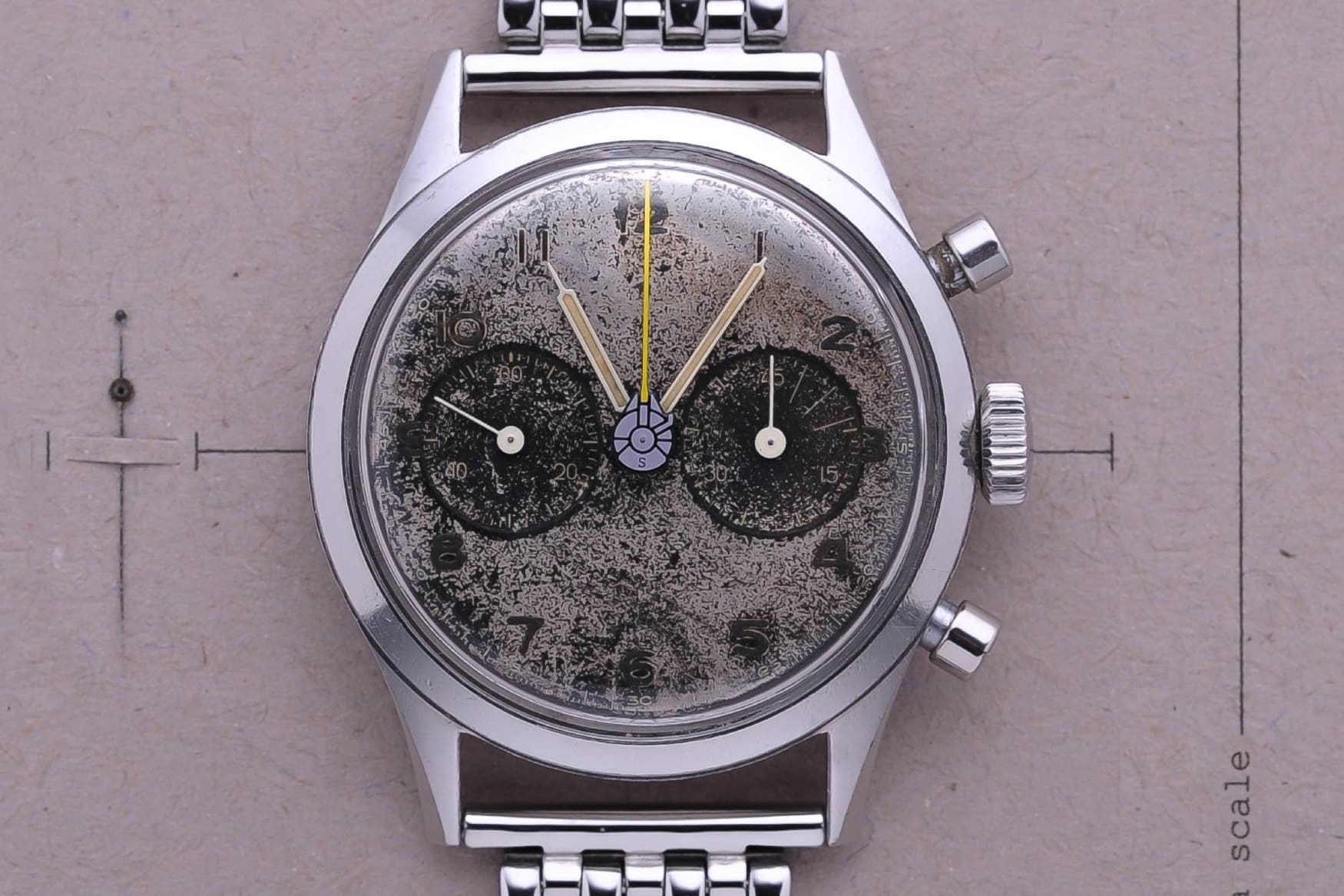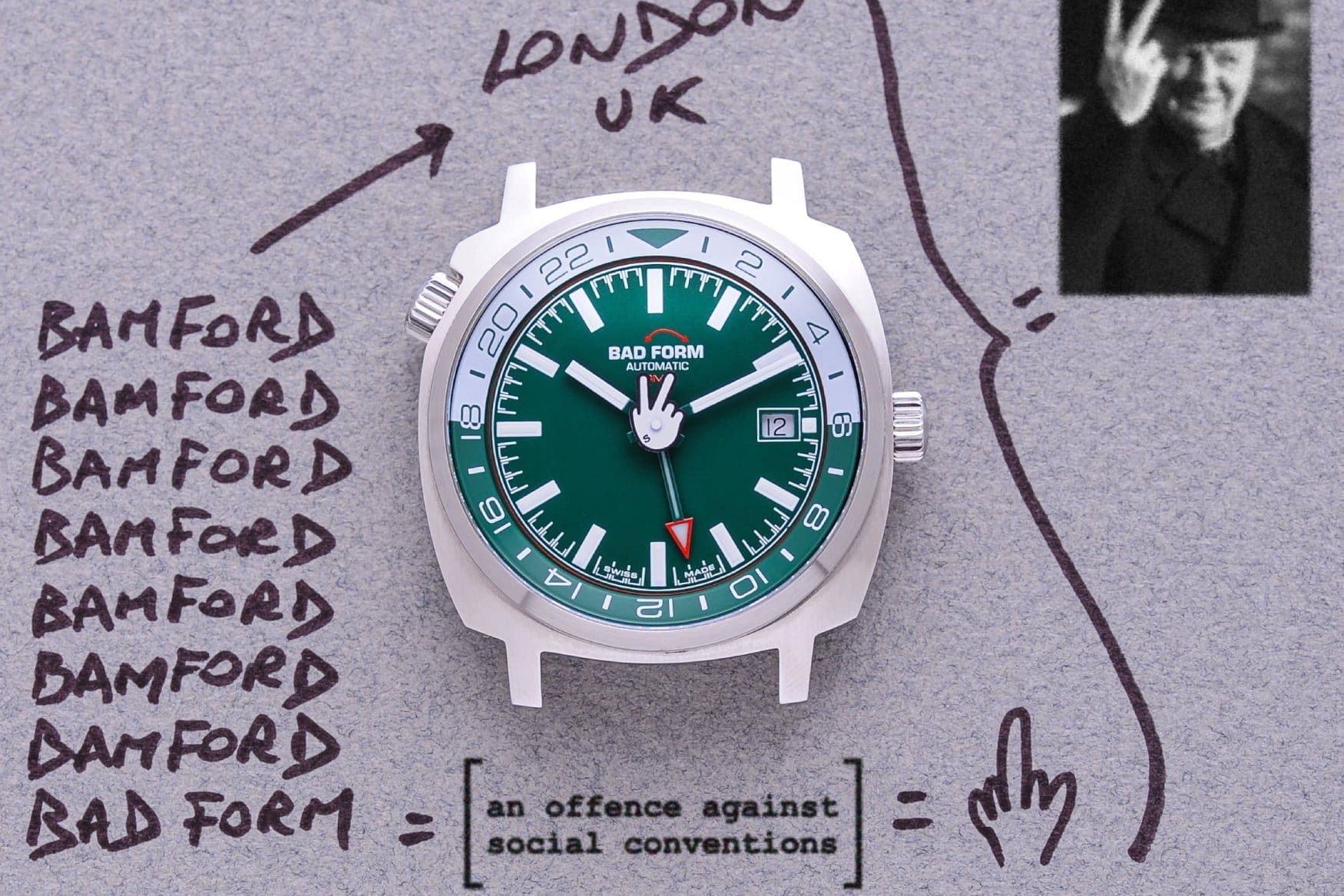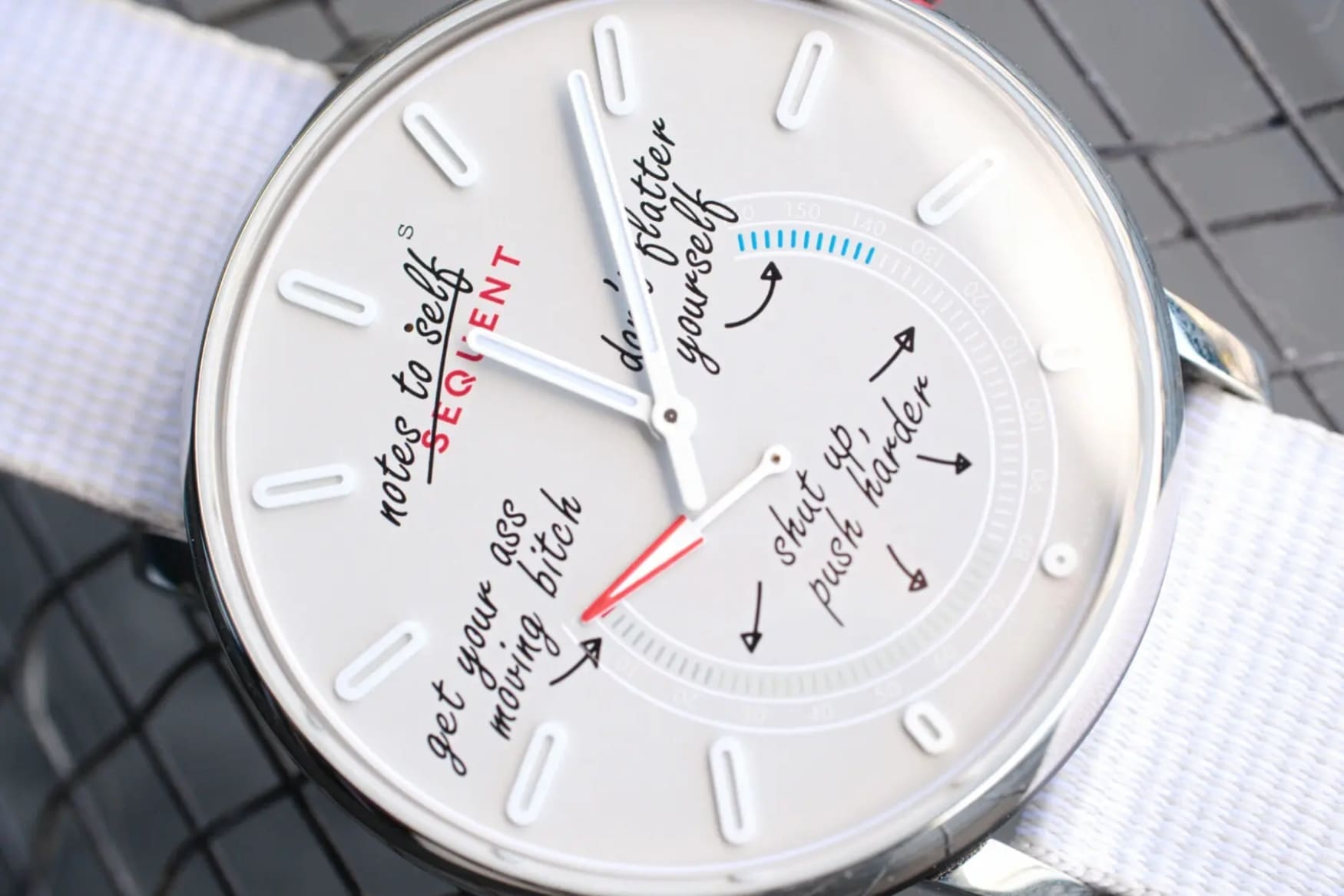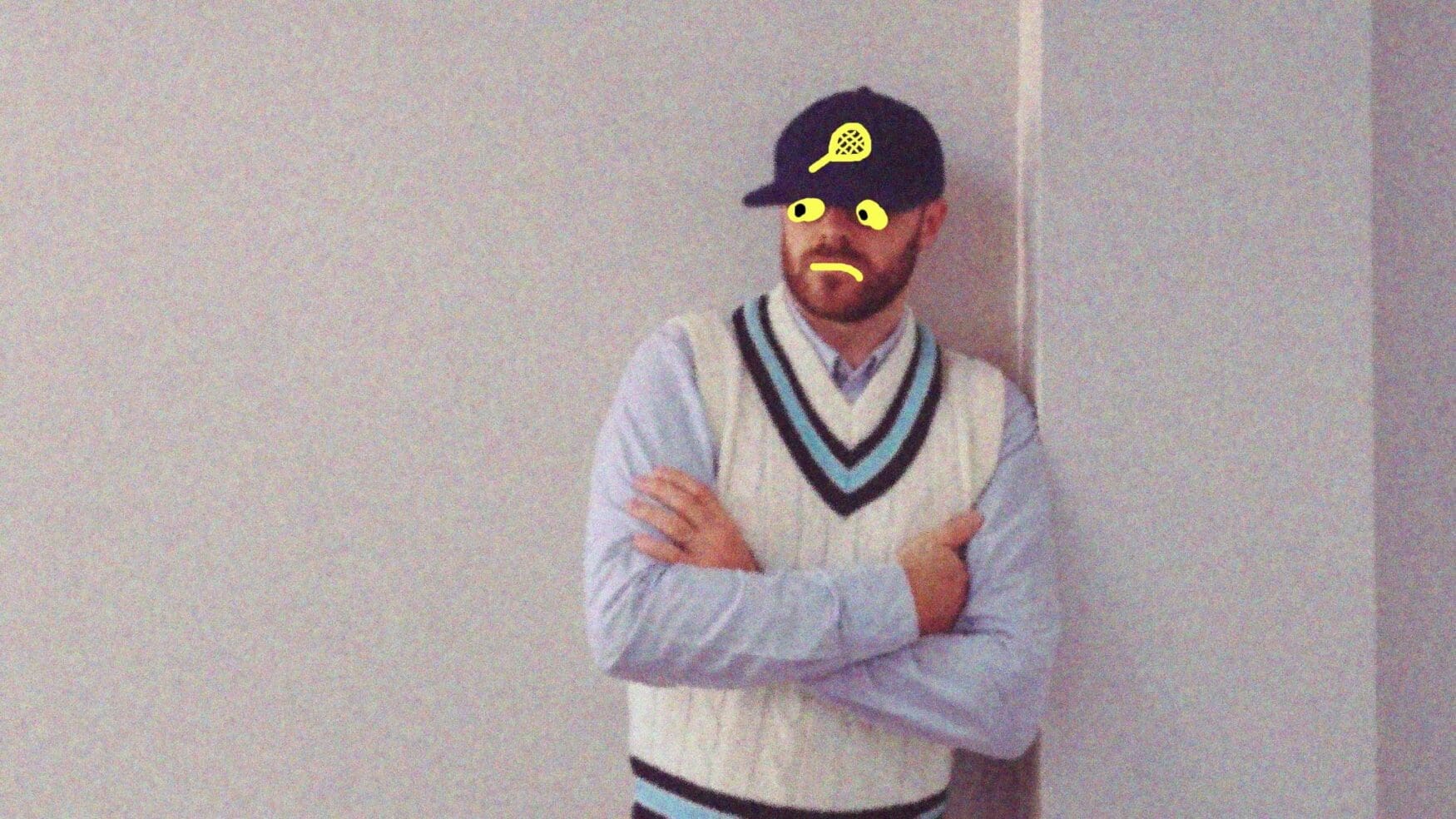How seconde/seconde/ became the watch world’s answer to Banksy
Borna Bošnjak“GET YOUR ASS MOVING, BITCH”, says the dial of a smartwatch with the pedometer needle pointing at zero. “Up yours!”, another watch playfully informs its wearer alongside the iconic Churchill “V” sign. A third reimagines the pitted, patinated case of a vintage chronograph, replacing its original central seconds hand with Millennium Falcon clip art. These are just some of the works of Romaric André, the man behind seconde/seconde/, and in a watch world that often takes itself far too seriously, they’re a welcome breath of fresh air.
The 41-year-old Parisian is as close as it gets to a horological Banksy – minus the political statements – with some extra cheekiness thrown in. He’s hesitant to call himself an artist, however, claiming he just vandalises other people’s products because he failed at building his own. The seconde/seconde/ project began when Romaric started playing around with vintage watches.

“I started with let’s customise…I don’t like this word, but, let’s add a twist to vintage watches”, he explains. The easiest way to do this without trampling over the heritage of a particular piece was to swap out the seconds hands instead. Romaric would elaborate by adding 8-bit art of a sword here, a little bee there, or the aforementioned Millennium Falcon shooting out a laser. Admittedly, these were small amendments, but they had the power to radically alter the complexion of a vintage watch. The Star Wars inspiration came when he found a 1950s Zenith chronograph supposedly issued to the Yugoslavian Air Force. “Those old jet fighters, with their rust, I made the connection in my mind – it was the Millennium Falcon”, he recalls. But whatever Romaric swaps out – be it a petite seconde, a central seconds or chronograph hand – the original would be safely stored to ensure the client could swap it back should they wish.
As his creations gained traction, Romaric took the next step in his horological journey with his first collaborative watch, this time with the help of Massena LAB. Taking on the Uni-Racer design, he swapped the hand of the “big eye” chronograph totaliser with, well, a big eye. Nine collabs and many hand swaps and collages later, seconde/seconde/ is gaining deserved recognition.
Romaric admits he’s taken an unlikely path to this destination. After studying at a business school in France, he started off in financial auditing and dabbled in the corporate world. But in the mid noughties, inspired by the work of the likes of Richard Mille who showed Romaric that “you didn’t need a century of heritage to be at the top of the game”, he became part of a unique melange between new and old, outfitting a mobile phone with a tourbillon mechanism. “It was a beautiful and weird, but interesting object”, Romaric reminisces of the project that was backed by some horological big hitters with the likes of Edouard Meylan of H. Moser & Cie and Richard Mille himself on the board of the company. With the eventual boom of the smartphone industry, however, it turned out not to be viable.

With his initial project bankrupt and other ideas in need of financial backing, Romaric started toying around with the notion of restyling vintage watches in fresh new forms. “At this time, I could buy two Omegas or two Rolexes for a few thousand Euros, and then you get something to work on.” Rearranging a Calatrava here, a Royal Oak there, with plenty of vintage Air-Kings and Oyster Dates in between, these small artistic touches have become the defining feature of a seconde/seconde/creation. Romaric, however, refrains from overusing the a-word too much, explaining: “I’m not a photographer, I’m not a designer. I don’t have the background to make myself comfortable saying that it was my objective to become an artist, and now I am. I’m cautious when I try to define myself, so I like to say I’m creative.”
Whether you see the efforts of seconde/seconde/ as artistic or not, one thing is for sure – subversive audacity permeates the designs. “I’m not super comfortable doing what people are expecting me to do”, he explains. “I’ve started to have some people that like what I do, telling me ‘Ah we hope the next product will be this’, but I hope that I’ll disturb them with my next product. What you like today may not be what I apply tomorrow, and you’ll criticise what’s coming. But I’m okay not being liked, so maybe that’s the beginning of the definition of a rebel.” At the same time, Romaric is mindful that his work offers a very mild form of provocation at best and is deemed rebellious purely inside the watch world’s traditional confines. He laughs at the idea that he’s some anti-establishment insurgent. “I’m married, I’ve got two kids… Can you be a rebel [like that]? That’s a sweet and smiley rebellion. I don’t intend to break the system.”
Where Romaric really sets himself apart for me is the healthy dose of self-deprecation that he applies across the board. Just visit his website and you’re greeted by Romaric with a doodled frown, letting you know how he feels about his work, calling himself a vandal. In a world of bloated horological egos, that is a truly rare occurrence, though Romaric sees both sides of the coin. “In this industry, the signals are sent in the same kind of direction. It’s excellence, it’s for winners, we are on top of the game, and that if you buy our watches, you are a winner, a high achiever.” While satirising the aspirational advertisements that dominate the luxury industry is clearly a big part of his work, he’s also thankful for their existence, too. “The day the brands stop doing that, what am I going to do?” he says. “I want them to play on how their watch is going to change your life.”

Indeed, rather than being some form of trigger-happy iconoclast, Romaric admits he harbours a genuine appreciation for great watchmaking. Would this inherent respect for others’ creations mean that some projects would feel too blasphemous to attempt, whether that be a vintage holy grail, or something too irreverent for a brand collab? The answer is not that simple. “There is no limit. But there is a practical limit”, he says. “You could say there is a great watch that needs to be respected, but I will never really work on it in the metal. So, I will not physically work on it, but I will be able to make a collage or some visuals.” As he explains, it’s not really the monetary value of a watch, rather the problem of accessibility – think piece uniques or significant museum pieces that, while ripe for the seconde/seconde/treatment, are simply out of reach.
When it comes to collaborating with brands, it gets a little more complicated, though it’s not been an issue thus far. Romaric recalls that, while he hasn’t butted heads with anyone during the design process, there wasn’t a need to, as the goals of the brands he’s worked with aligned with his own. “I’m all for good vibe approaches, so it never really happens”, he says. While Romaric hasn’t had issues with a creation possibly being too over-the-top, he has hesitated with releasing certain designs. “Sometimes I hesitate to post something I’ve done. Is it smart enough? Is it too obvious?”, he chuckles. “I’m not super comfortable with vulgarity, I tend to find it too easy.”
However, what he’s (un)comfortable with now won’t necessarily be the same in years to come. Romaric explains he’s been challenged with the concept of erotic watches, with people suggesting that they’d enjoy seeing a seconde/seconde/ take on this controversial part of horology. “I don’t feel comfortable with it, so I didn’t do it. But, maybe in three years, I’ll find it acceptable and fun. I don’t know”, Romaric explains with a shrug.
There’s also a possibility that the seconde/seconde/ evolution may one day go beyond swapping out seconds hands. “There is the big dream of mine, to one day have my own watch brand,” he says. “I’m working towards that dream. I don’t know if it will happen or not.” Romaric further teases that further collaborations with brands are likely to involve thinking beyond the dial, experimenting with the case and the like. Rather than settle into a niche and dwell in the past, he’s relentlessly looking forward. When asked what his favourite work is, the answer is instant. “It’s always the next one,” he insists. “I’m passionate about the process of finding ideas – it’s like a fix.




